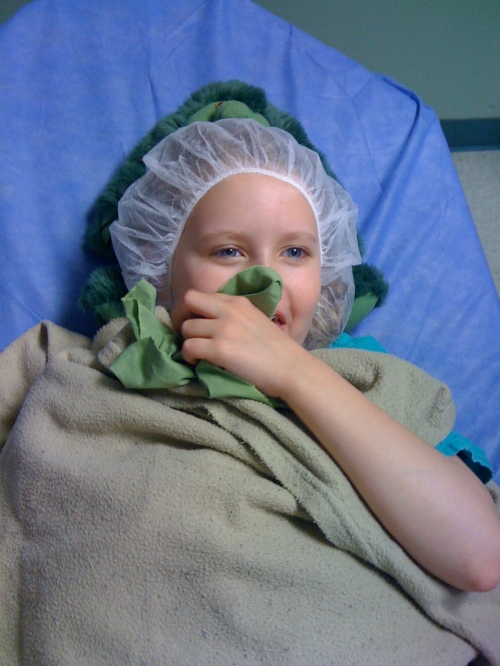“You thought my autism was hurting me and that you needed to remove it, but you did not understand that it is a neurological difference and fear caused you to behave with desperation.” ~ Emma on the topic of the three stem cell treatments we did in 2010
Every now and then people find this blog through a site that promotes stem cell treatments in Central America. In our long and twisted journey since Emma was diagnosed with autism, stem cell treatments were something we once hoped would help our daughter. It is a decision I deeply regret. People ask me whether I think it may have helped her. I do not. People have wondered whether the tremendous strides Emma has made are not directly related to those stem cell treatments. They are not. I can say this with assurance. If you want to learn more about how Emma is communicating, click on this link. The stem cell treatments put Emma’s life in danger. We have no way of knowing what we may have exposed her to because of those treatments. For the rest of our lives we will not know if the stem cell treatments harmed her. We will never know and that is a fact we must live with.
In April of 2010, we believed anything was worth trying if it would help our daughter. Just four years ago, I believed being Autistic meant a life of untold misery. Autism was a list of deficits. At the time, I doubted whether my daughter would be able to learn to read and write, let alone speak in a conversational manner. I had no idea what my daughter was capable of. I had no idea that she already knew how to read. I know this now because she has told me through her writing.
We took Emma to Costa Rica and later to Panama for three rounds of stem cell treatments despite being strenuously urged not to go by a team of stem cell researchers out of Harvard. We were cautioned about the experimental nature of this procedure. We were told it was risky, dangerous, highly invasive, and yet we made the decision to take her anyway. We did this because we loved our child and, at the time, believed anything we tried was worth it, if it might “save” her. (I use that word purposely because this was what we once believed.) We believed we were giving her a chance at life, we believed, if we did not try this, we would regret it. We held out hope that maybe, just maybe this would help her communicate and thereby give her the opportunity to form friendships.
I’m not going to go on a rant about all the misinformation we were given by well meaning professionals, educators, medical experts and pretty much every single person we came into contact with on the subject of autism and our daughter, all of that is pretty well documented throughout this blog over the last year and half, but I will say this, our response to autism and what we believed that meant for our daughter was not unique. We knew of a great many parents who believed just as we did, that any treatment was better than doing nothing at all.
This blog began as a result of those stem cell treatments. I never thought more than a handful of people would read what I was writing. This blog was a way to document the changes we hoped we would see because of the stem cell treatments, a treatment that is not allowed in the United States, a treatment that has since been outlawed in Costa Rica as well. We believed we were doing a good thing. For those of you who never contemplated such drastic measures, I understand how incredible this must sound. For those of you who are Autistic, I can only tell you how sorry I am that this was what we once believed.
We all make mistakes. Some of us have made terrible ones; things we cannot undo, take back or cancel out with an apology, no matter how heartfelt. What I can do is continue to learn, hope to do better, and do all I can to counter that list of deficits so commonly attached to an autism diagnosis, while signal boosting Autistic people’s words, including my daughter’s.
Last night Emma and I discussed those stem cell treatments from four years ago and she wrote the words I opened this post with. When I told her that if I could take those treatments back, if I could cancel them out, I would, in an instant and without hesitation. She then wrote, “Many parents have not loved their children as much as you.”
This isn’t about forgiveness, I know she forgives me, this isn’t about publicly beating myself up, this isn’t about me learning to forgive myself, this isn’t about me at all. This is about misinformation, where that misinformation leads us and the inherent problem with speaking about autism as a “medical disorder” as opposed to a neurological difference; a difference that carries assets and deficits just as non autistic neurology does. This is about oppression, segregation, prejudice and how that plays out in every aspect of autism, autism research, autism treatments, biomed interventions and almost all of the various autism therapies that currently exist.
“Put it on the blog!” Emma said, after we talked about all of this.
“Really? You want me to put this on the blog?”
“Yes,” she said and then she leaned over, gave me little kisses and added, “Aw… sweetheart…”













